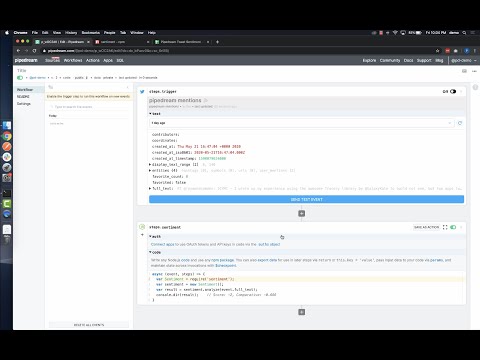What do you want to automate
with Google Sheets and WordPress.org?
Prompt, edit and deploy AI agents that connect to Google Sheets, WordPress.org and 3,000+ other apps in seconds.
Trusted by 1,000,000+ developers from startups to Fortune 500 companies
Popular Ways to Connect Google Sheets with WordPress.org#
Popular Google Sheets and WordPress.org Triggers#
Emit new event each time a comment is added to a spreadsheet.
Emit new event each time a row or rows are added to the bottom of a spreadsheet.
Emit new event each time a row or rows are added to the bottom of a spreadsheet.
Emit new event each time a row or cell is updated in a spreadsheet.
Popular Google Sheets and WordPress.org Actions#
Add a single row of data to Google Sheets. Optionally insert the row at a specific index (e.g., row 2 to insert after headers, shifting existing data down). See the documentation
Add multiple rows of data to a Google Sheet. See the documentation
Get all values or values from a range of cells using A1 notation. See the documentation
Overview of Google Sheets#
The Google Sheets API allows for the creation, reading, updating, and deletion of data within Google Sheets, enabling a robust platform for spreadsheet management and data manipulation. Through Pipedream, you can craft serverless workflows that respond to various triggers, such as webhook events, emails, or scheduled times, to interact with Google Sheets. This synergy can automate reporting, synchronize data across applications, manage inventory, track leads in a CRM, or even conduct survey analysis by updating and retrieving sheet data on the fly.
Connect Google Sheets#
import { axios } from "@pipedream/platform"
export default defineComponent({
props: {
google_sheets: {
type: "app",
app: "google_sheets",
}
},
async run({steps, $}) {
return await axios($, {
url: `https://www.googleapis.com/oauth2/v1/userinfo`,
headers: {
Authorization: `Bearer ${this.google_sheets.$auth.oauth_access_token}`,
},
})
},
})
Overview of WordPress.org#
The WordPress.org API offers a wide range of capabilities for content management, theme and plugin information, and community engagement. With Pipedream, you can harness this API to create automated workflows that react to events in WordPress, sync content across platforms, or even manage your site's appearance and functionality programmatically. Whether you're looking to streamline your publishing process, enhance user interaction, or keep everything in sync, the WordPress.org API on Pipedream offers a powerful toolset to craft custom solutions.
Connect WordPress.org#
import { axios } from "@pipedream/platform"
export default defineComponent({
props: {
wordpress_org: {
type: "app",
app: "wordpress_org",
}
},
async run({steps, $}) {
return await axios($, {
url: `https://${this.wordpress_org.$auth.url}/wp-json/wp/v2/users`,
auth: {
username: `${this.wordpress_org.$auth.username}`,
password: `${this.wordpress_org.$auth.application_password}`,
},
})
},
})
Related Videos#



Community Posts#


